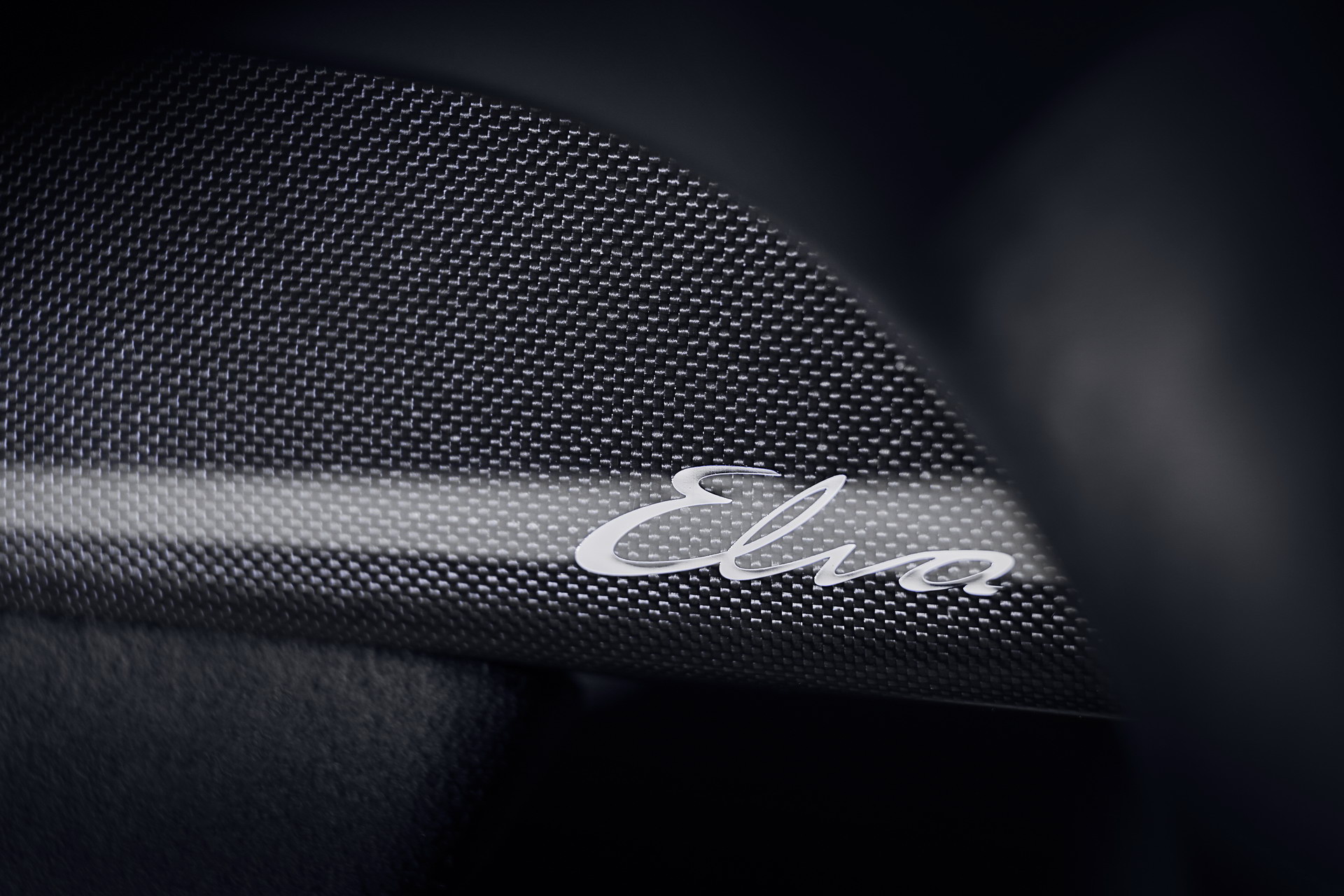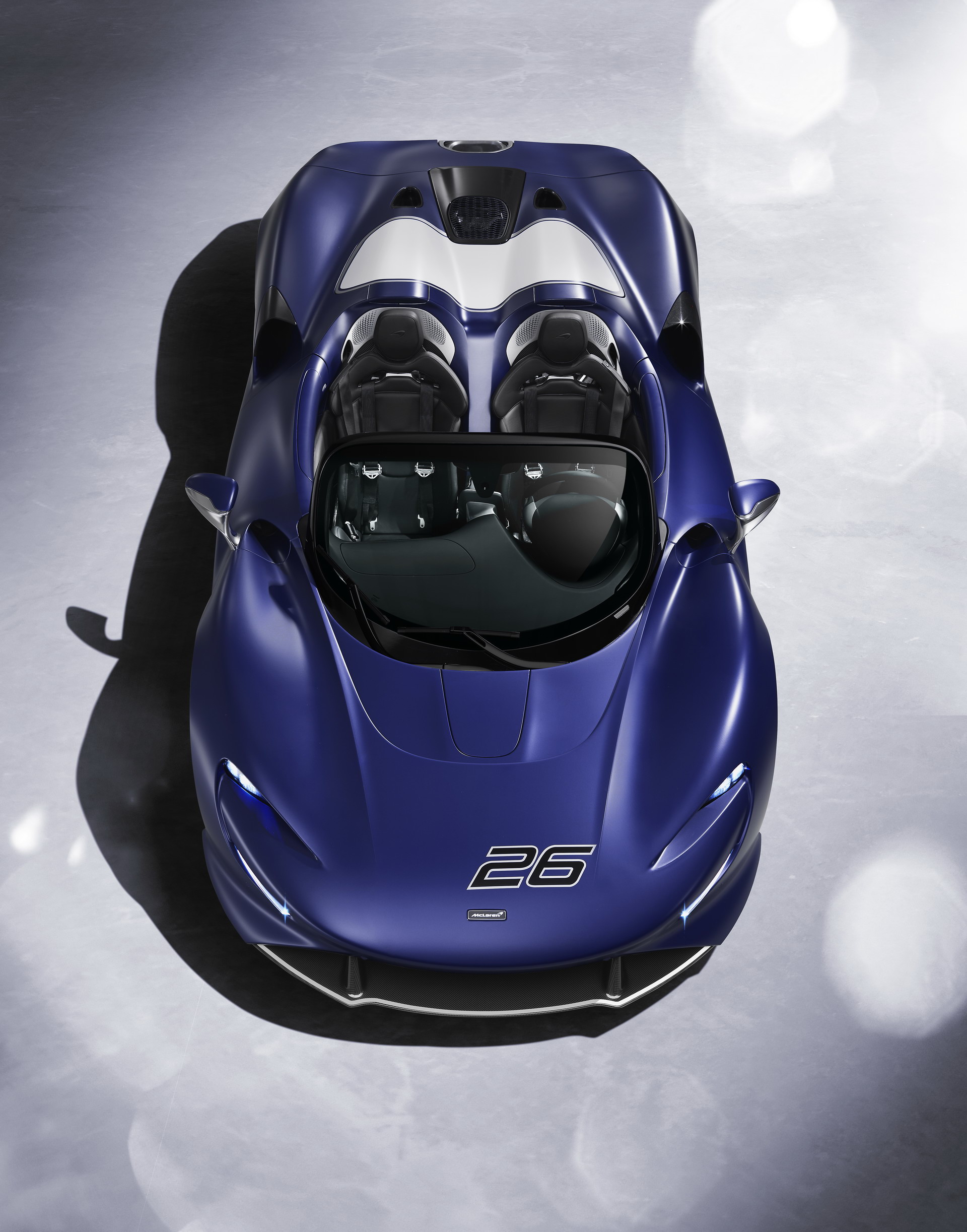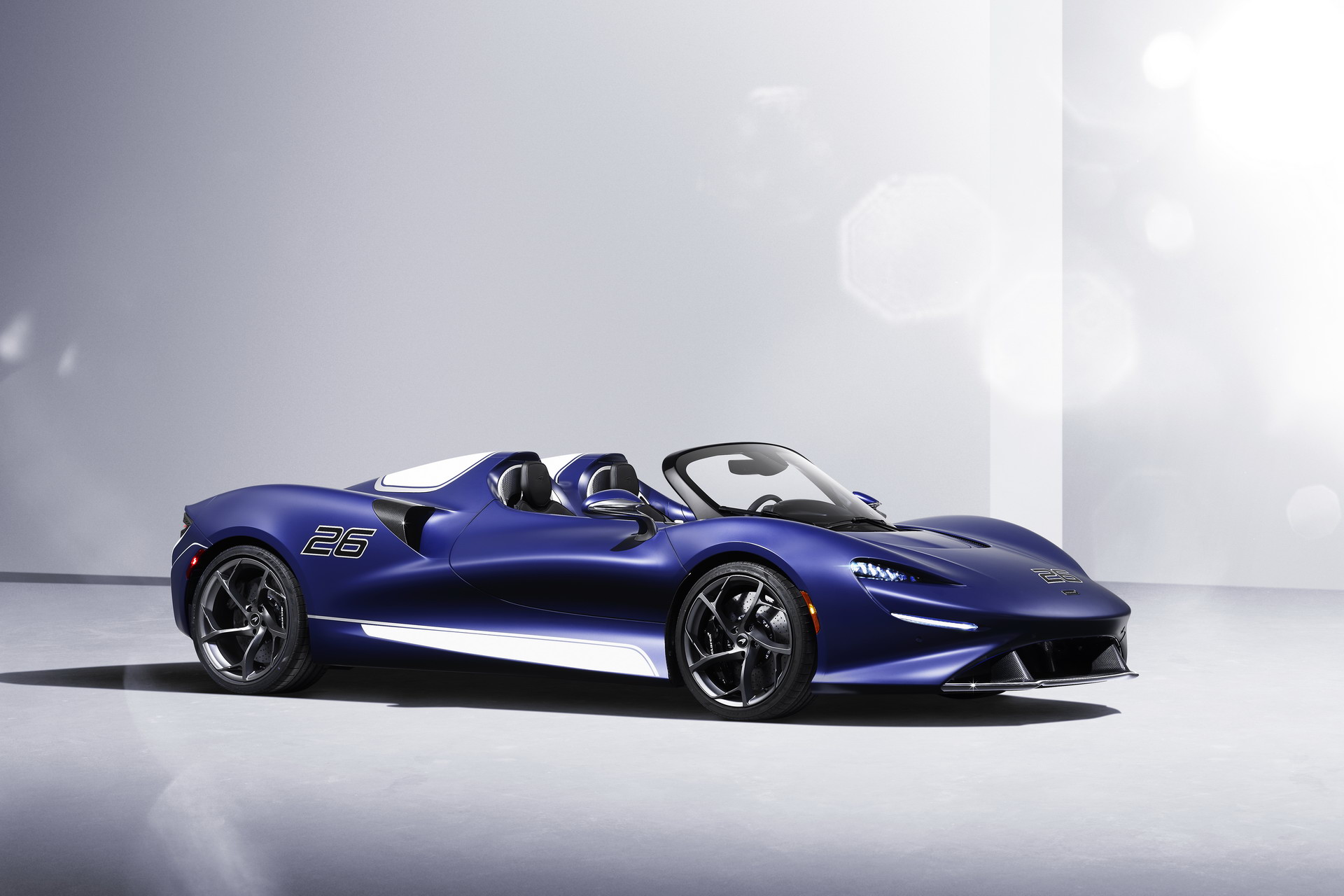McLaren has made the Elva a bit more useable by introducing a windscreen version of its exotic model.
The supercar is set to enter production soon, with deliveries commencing before the end of the year, subsequent to personalization by the MSO division, and “shares all of the ethos and performance of the original car”, in the British automaker’s own words.
While the screenless Elva is the company’s lightest street-legal car ever, the windscreen variant isn’t that far behind either. Its new heated glass windscreen and carbon fiber surround, electronically synced rain-sensing wipers, washer jets and sun visors add only 20 kg (44 lbs) to the 1,300 kg (2,866 lbs) dry weight of its sibling. Also, the Active Air Management System (AAMS) has been deleted.
Review: McLaren Elva Combines Gorgeous Looks With Insane Performance
“Roofless and without windows, whether you opt for the screenless model with its sophisticated AAMS technology that provides an invisible barrier of air, or the windscreen version with an additional level of enclosure, this is a roadster that rewards owners with the most exhilarating of open-air driving experiences, delivered as only a McLaren can”, said CEO Mike Flewitt.
The performance of both supercars is comparable to that of the Senna, with the screenless one taking 2.8 seconds to accelerate to 100 km/h (62 mph), and 6.8 seconds to hit 200 km/h (124 mph) from a standstill. Power is supplied by a twin-turbo 4.0-liter V8 that churns out 815 PS (804 HP / 600 kW) and 800 Nm (590 lb-ft) of torque, directed to the rear axle through a seven-speed dual-clutch automatic transmission.
On a final note, McLaren has announced that “no more than 149 examples of the Elva will be specified and built to customer order”. This is actually the second time they have reduced the build run, initially from a planned 399 units to 249 last year, and now to 149.










